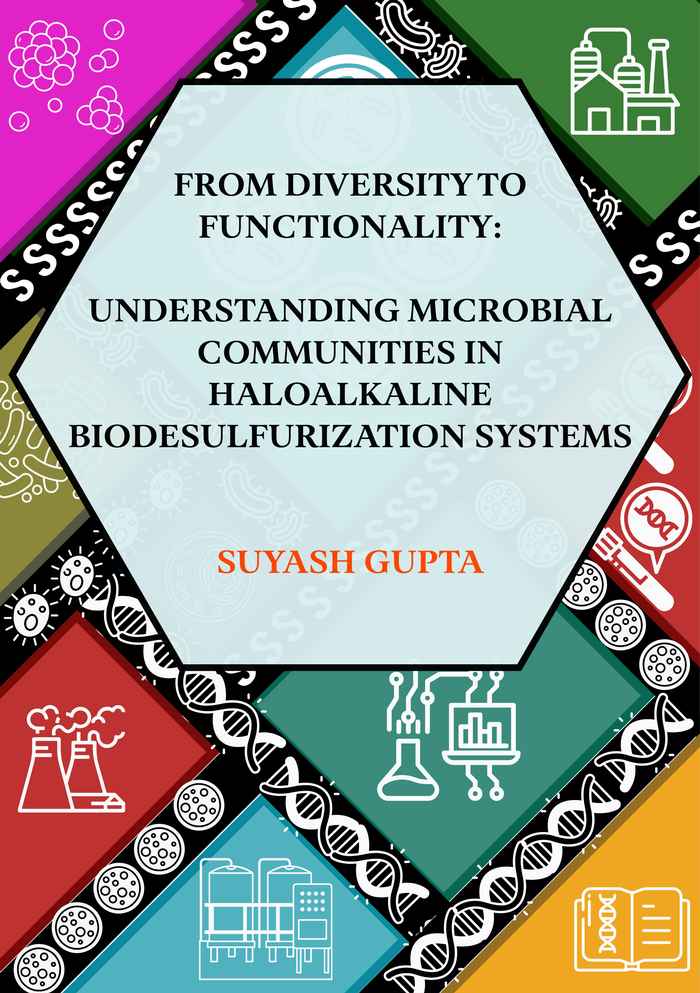PhD defence ceremony by Suyash Gupta
- Date
- 21 February 2025
- Time
- 13:00
- Location
- Agnietenkapel

Sulfur, abundant on Earth, undergoes a microbial-driven cycle across oxidation states. Microbes thriving in sulfide-rich environments enable pollution mitigation and sulfur recovery, despite H2S toxicity. Haloalkaline biodesulfurization, an eco-friendly process, employs haloalkaline sulfide-oxidizing bacteria (SOB) to convert toxic H2S into elemental sulfur (S8). It can completely remove gaseous sulfide from the inlet gas streams from various natural and industrial sources such as landfills, paper, textile, oil and gas and others. The produced sulfur can be used to make fertilizers and hence contributes to circulation of resources. Understanding key microbes and underlying mechanisms driving this bioprocess is crucial for optimizing and advancing the bioprocess. This thesis systematically investigated microbial communities in pilot- (dual reactor line-up with anoxic and oxic bioreactor) and full-scale (single-reactor line-up with only oxic bioreactor) biodesulfurization installations. It was shown that composition and source of the feed gas impacted the diversity of microbial community. Despite that, all the installations had a set of common microbes contributing to sulfide oxidation with Thioalkalivibrio as the most abundant genus. However, for dual reactor line-up, Alkalilimnicola emerged as abundant as Thioalkalivibrio, which contributed to higher selectivity of sulfur formation. The dual-reactor system, when investigated at different process conditions, variable hydraulic retention time (HRT) and sulfide concentration in anoxic reactor, suggested that both these parameters impact activity of SOB. This thesis combines substrate kinetics and molecular biology to infer the mechanisms involved in sulfur conversions up to molecular level. It also proposes indicator genes for the increased thiosulfate (undesired by-product) formation
